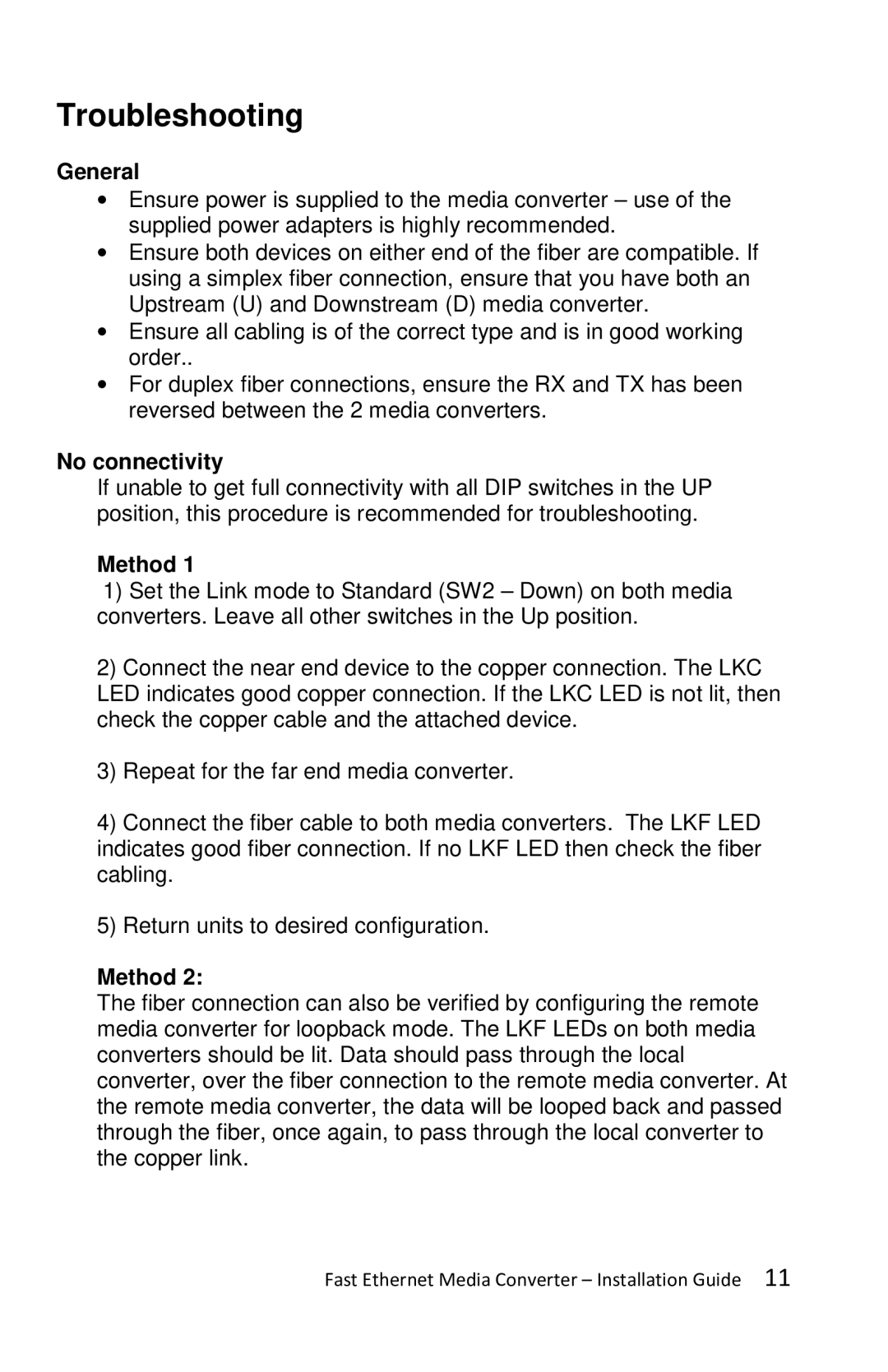Troubleshooting
General
∙Ensure power is supplied to the media converter – use of the supplied power adapters is highly recommended.
∙Ensure both devices on either end of the fiber are compatible. If using a simplex fiber connection, ensure that you have both an Upstream (U) and Downstream (D) media converter.
∙Ensure all cabling is of the correct type and is in good working order..
∙For duplex fiber connections, ensure the RX and TX has been reversed between the 2 media converters.
No connectivity
If unable to get full connectivity with all DIP switches in the UP position, this procedure is recommended for troubleshooting.
Method 1
1)Set the Link mode to Standard (SW2 – Down) on both media converters. Leave all other switches in the Up position.
2)Connect the near end device to the copper connection. The LKC LED indicates good copper connection. If the LKC LED is not lit, then check the copper cable and the attached device.
3)Repeat for the far end media converter.
4)Connect the fiber cable to both media converters. The LKF LED indicates good fiber connection. If no LKF LED then check the fiber cabling.
5)Return units to desired configuration.
Method 2:
The fiber connection can also be verified by configuring the remote media converter for loopback mode. The LKF LEDs on both media converters should be lit. Data should pass through the local converter, over the fiber connection to the remote media converter. At the remote media converter, the data will be looped back and passed through the fiber, once again, to pass through the local converter to the copper link.
Fast Ethernet Media Converter – Installation Guide 11
